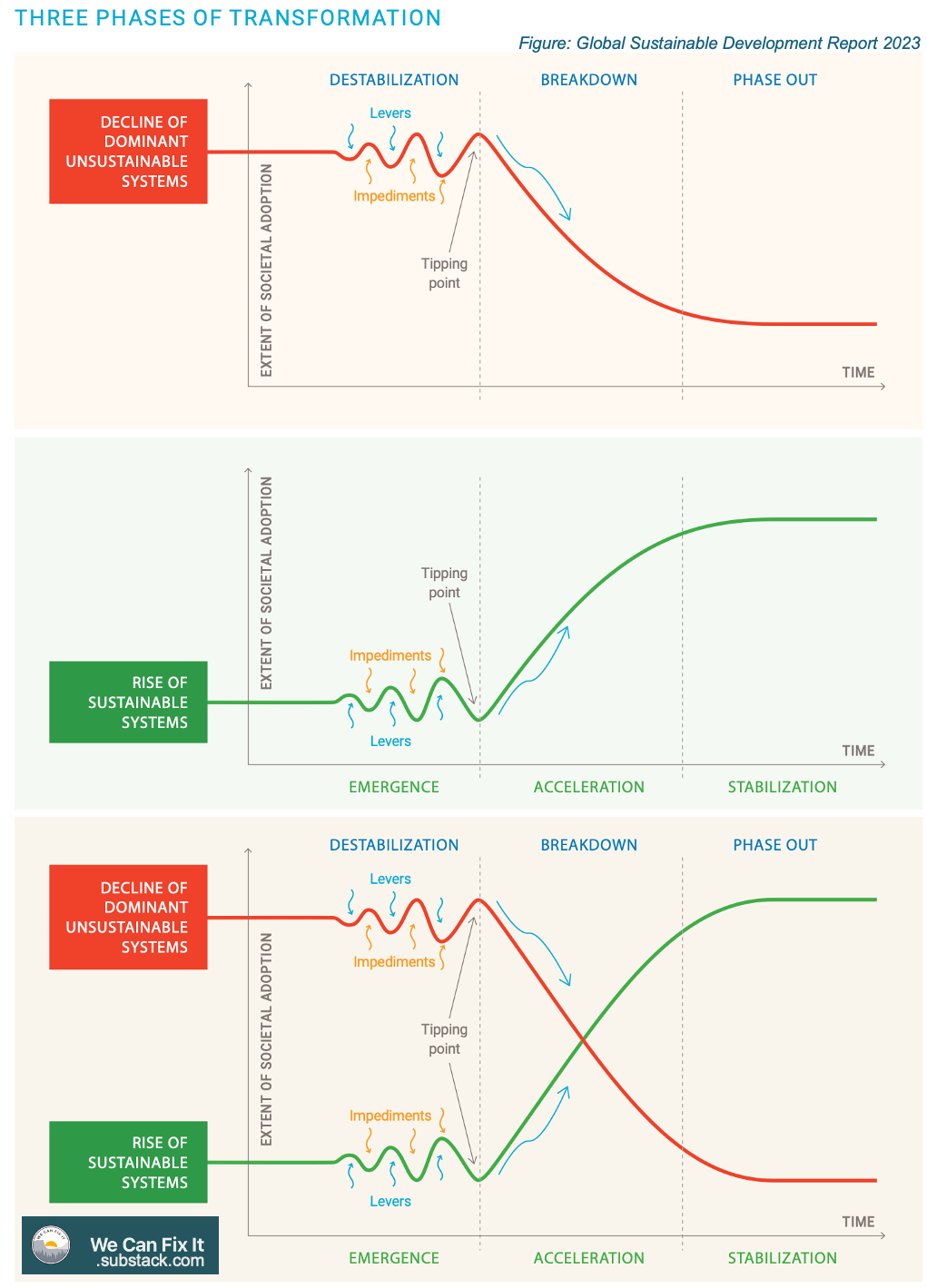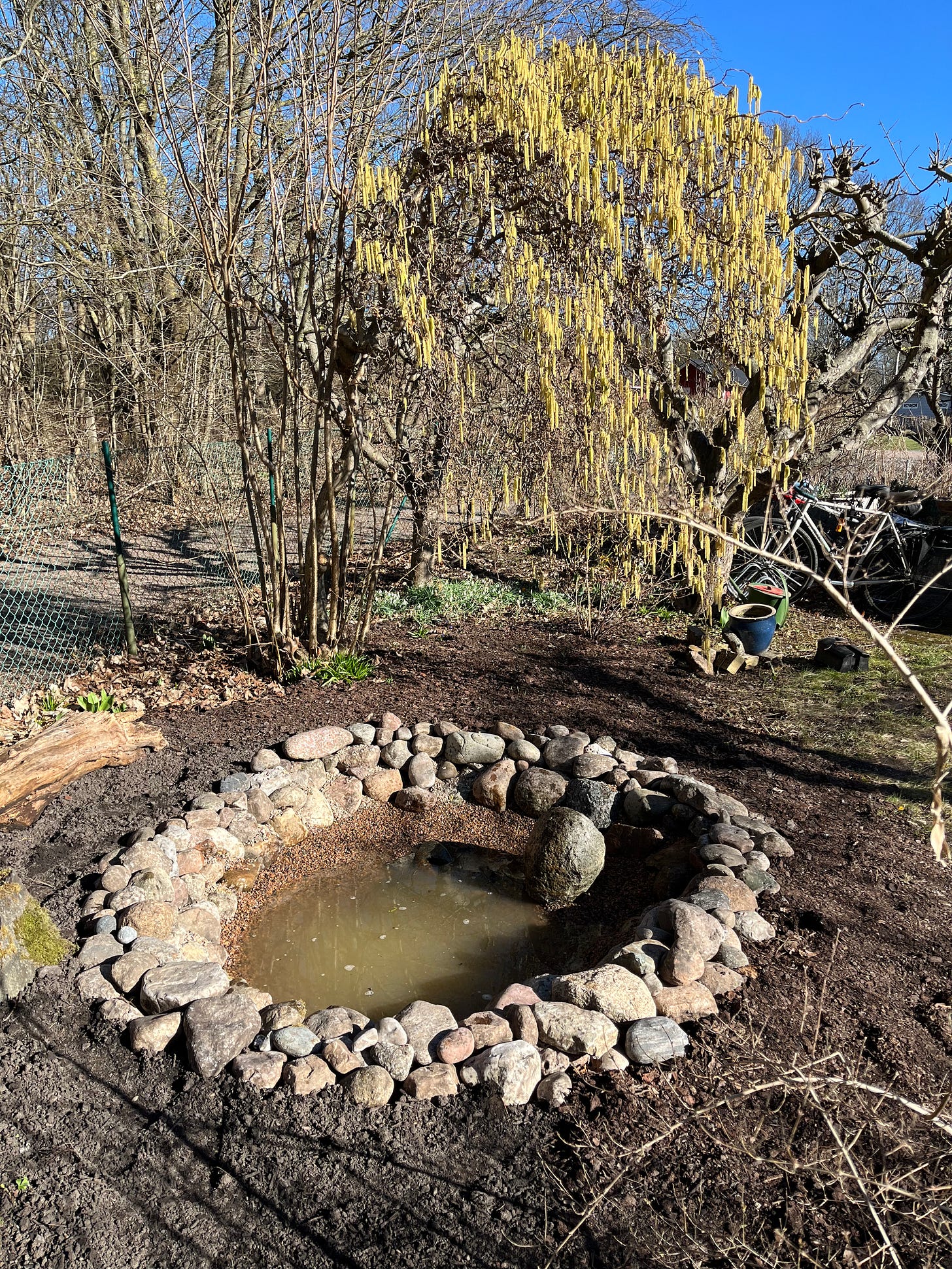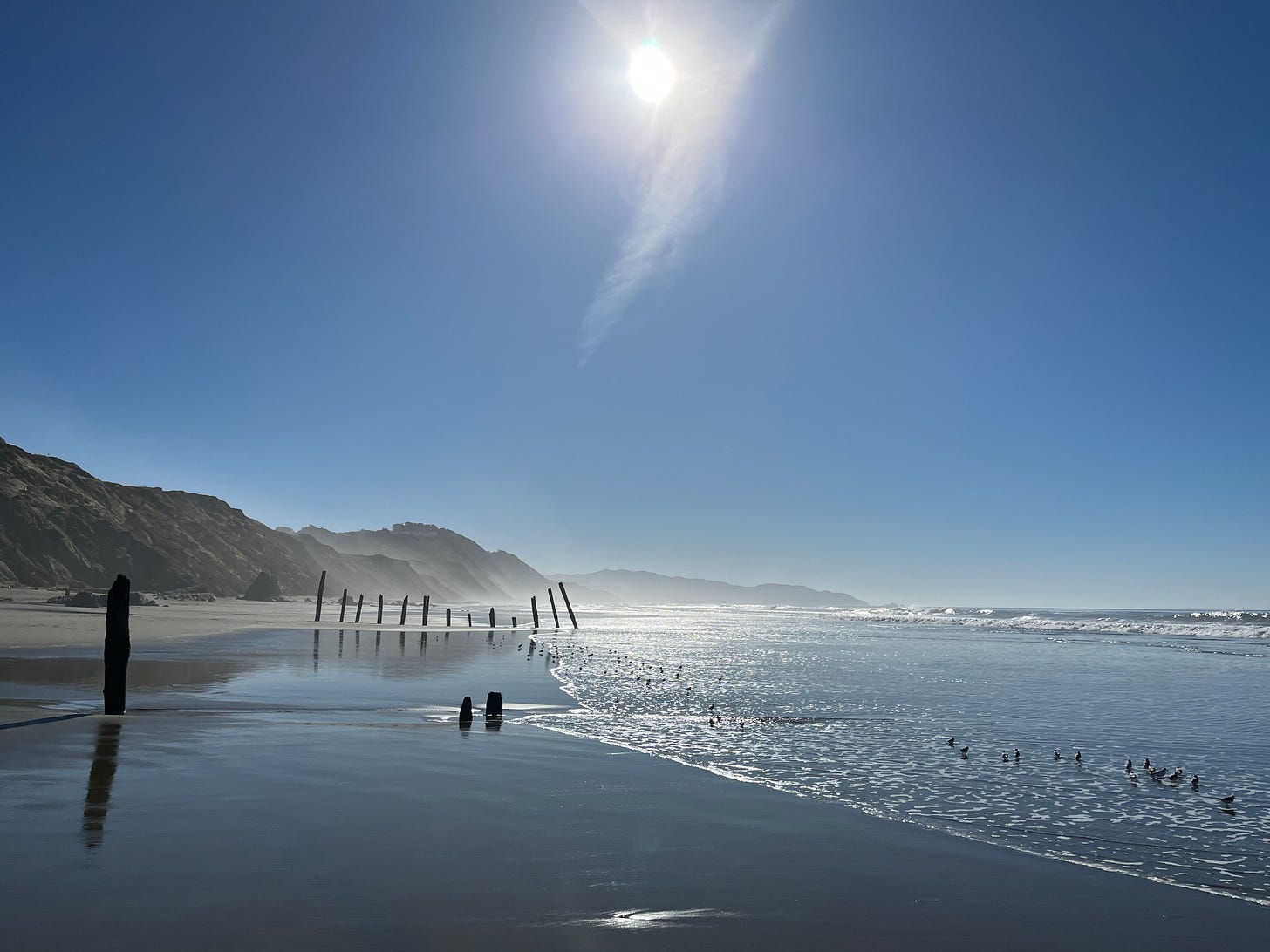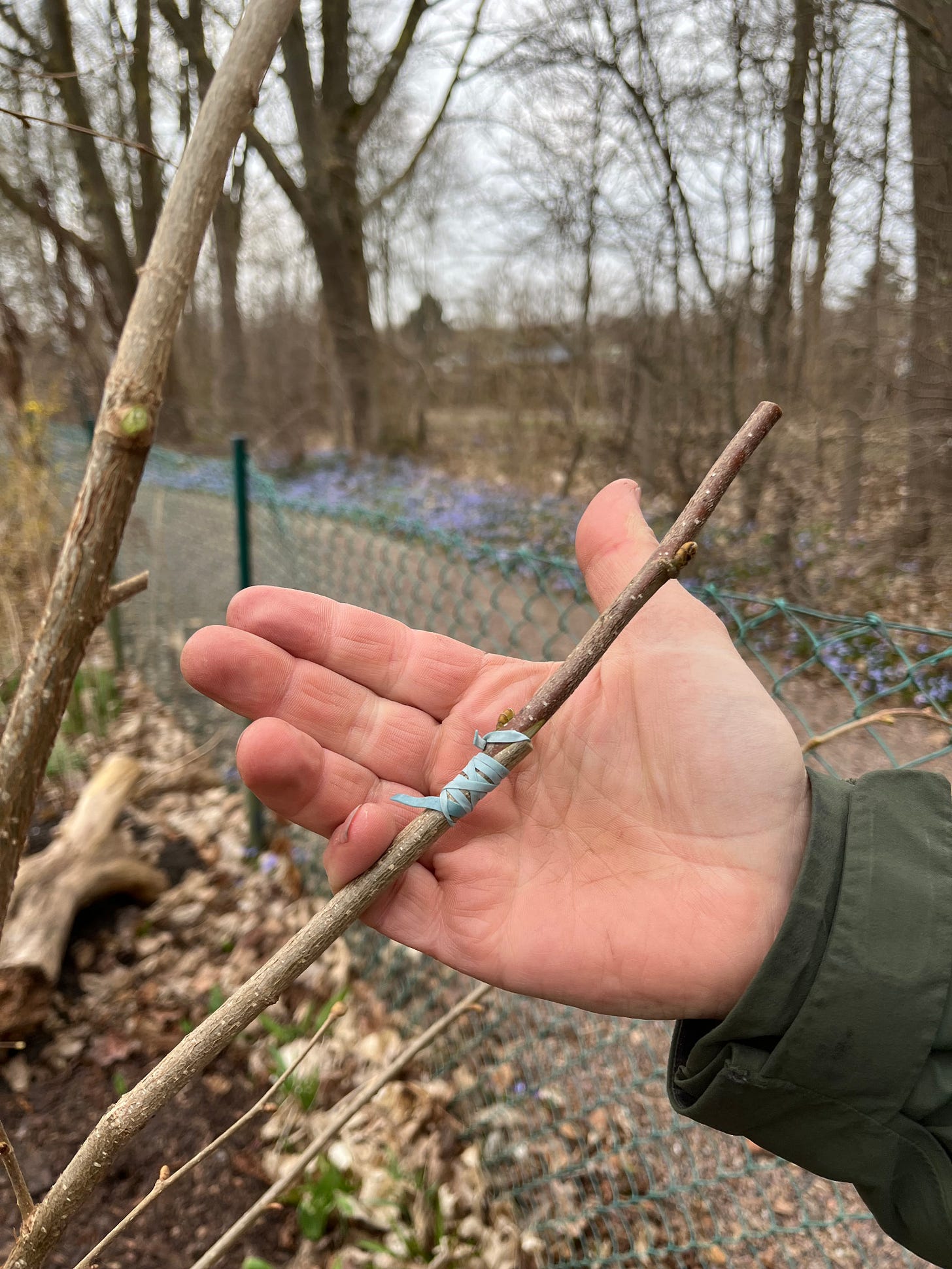How transformation happens- and starts in your garden
Facts: 3 phases of transformation🌱 🚀💎| Feelings: Solution to existential crisis🖤| Action: Garden for frogs & nuts 🐸🌰
Hi friends,
From system transformation to existential crisis to frogs and nuts— we’re covering a lot of ground today!
This newsletter is free thanks to support from 107 wonderful paid subscribers- thank you! Your support keeps me going. (If you’d like to join them, scroll to the end.)
Facts: Three Phases of Transformation
In unsettled times, it’s helpful to understand how deep change unfolds.
Top scientists, including the IPCC and IPBES, agree that avoiding climate and ecological breakdown requires not tweaks, but transformational change: “fundamental, system-wide shifts in views, structures and practices.”
Fortunately, there’s science on how to accelerate sustainability transformations. According to the Global Sustainable Development Report,
Transformation happens in three phases, on two tracks at once:
Phasing out the harmful (like fossil fuels and industrial agriculture)
Scaling up the sustainable (like renewables and regenerative farming)
These tracks are mirror images. The new can only rise as the old is dismantled. That’s why it feels like chaos— because it is!
🌱 Phase 1: Destabilization + Emergence
In the first phase, cracks appear in dominant systems, sometimes triggered by crises. Innovative ideas, tech, and practices begin to emerge on the margins.
Change agents can help tip the balance by using positive levers of change, like:
Governments making smart long-term policy
Investors funding the real economy
Researchers and creatives developing social and technical innovations
People rethinking how we live and what’s possible.
But there are also impediments blocking transformation, like weak policies, lobbying from vested interests, or entrenched practices and behaviors.
It’s a bumpy road, but when levers outweigh impediments, the system can reach a tipping point.
For social change, around 25% of a population can be enough to tip the whole society.

🚀 Phase 2: Breakdown + Acceleration
In this phase, green alternatives gain momentum. Sustainable technology, institutions, behaviors and norms accelerate and are widely shared and adopted.
Government actions like targets, public infrastructure, standards and regulations, and policies that leave no one behind are often critical.
Meanwhile, harmful systems are breaking down.
Conflicts, tension, and political struggles are common.
The transformation can still fail, from lock-in, backlash, or even system breakdown.
💎 Phase 3: Stabilization
If green systems gain the upper hand, transformation enters the final phase.
Sustainable tech and practices become the new normal in daily life.
Meanwhile, deliberate policies and social shifts continue phasing out the bad stuff.
Yay!
Why this matters for you
This model shows transformation is not only about building something new.
Real change means unbuilding the harmful while nurturing the good.
You can be useful in transformation by supporting emergence (building shared visions, funding or testing a new solution, or shifting your own practice) or by destabilizing the dominant system (like combining carrots and sticks to reduce car use, or supporting the Fossil Fuel Non-Proliferation Treaty).
Transitions aren’t linear. Opposing forces clash at the same time. Knowing how systems transform can help us apply positive levers for change. 💪
Feelings: Solution to Existential Crisis 🖤
Transformation is personal, too. March 9 marked ten years since the death of one of my best friends from college. We threw a heart-filling party to remember and celebrate him. Keep Pubby Weird!!
I went back and read my journal from when he died, and found something I’d written about how he faced his mortality. It still resonated for me:
The solution to existential crisis is to face the truth head on, bravely and unflinchingly, and find a way to keep going. To know all the gory details, and still see what is beautiful amidst all that is not. To not lose hope.
P.S. You can read Pubby’s writing here and here.
Action: Garden for Frogs 🐸 & Nuts 🌰
Getting spring gardening fever? Me too!
Here are two things underway in my garden right now that might inspire yours- and help support biodiversity and yummy climate-friendly food in the process.
1. Build a garden pond 🐸
Water is life. And life on earth is in trouble, though we do know how to save it globally.
One humble, local contribution is garden ponds. Studies show backyard ponds can play an important role for urban wildlife, including frogs, birds, insects, and more. As our recent study showed, people need wildlife!
We’re installing a garden pond. I will be very excited if frogs show up!
How to build a simple wildlife pond:
Use whatever space you have. Even a small tub or old sink can help. Bigger ponds will attract even more wildlife.

Place it in a mostly sunny spot for maximum biodiversity.
Create depth variety to attract different species.
Use sloped sides, rocks, and entry ramps or logs so critters can safely get in and out. (Fun facts: dragonflies and birds use polarized light, while amphibians use scent!)
Use rainwater, not tap water, which has chemicals sensitive critters don’t like, and nutrients that feed algae growth. We’re currently waiting for more rain to fill our rain barrels!
Let it rewild on its own, if you can. Freshwater Habitats Trust notes this provides distinctive and valuable “young pond” habitat, and is most likely to end up with ecologically suitable species.
If you do want to add plants, stick to native wetland species from your region (within 20km; get landowner permission for collection). (If you just can’t stand waiting for nature to take its course, the Royal Horticultural Society has plant recommendations.)
Don’t add fish. They eat the critters you’re trying to attract, and their eggs!

The Wildlife Trusts has a good guide for building a backyard wildlife pond.
2. Plant or graft a nut tree
A few weeks ago, a stranger shared a crunchy snack in a bar, and I was hooked.
Fast forward a few weeks, and Göran was in my garden, grafting edible hazelnuts onto the rootstock of our ornamental hazelnut tree. Fingers crossed for homemade Nutella soon!
Why nuts?
Nuts are yummy, healthy, and long-storing.
They’re a plant-based protein, which is a high-impact climate action as they basically always beat animal-based options for climate, land, and water impacts.
According to the EAT-Lancet Planetary Health Diet, Europeans should eat 15x more nuts (along with 77% less red meat) for our own health, and that of the planet.
Although people in Sweden have been eating hazelnuts for at least 6,000 years (!!), we don’t grow many locally. Göran and Marijke Christiansson are on a mission to change that, promoting nut cultivation and knowledge from their nursery in Laholm.
Did you know those curly ornamental hazelnuts (which this Purdue University report calls “Contorted Filbert: A Gnarly Problem Plant,” haha) are often rooted on edible hazelnuts? Göran suggested grafting edible shoots onto the existing rootstock. To our knowledge, no one has done this before in Sweden. If it works, we’ll transform our hazelnut into a productive tree!
People have been grafting plant shoots onto the roots of other species to improve crops since at least 300 BC!
If you have garden space:
Plant or graft a nut tree - it’s a delicious, healthy, climate-friendly investment.
Look into hazelnuts, walnuts, almonds, or others, depending on your region.
No garden? You can still choose more plant-based protein, grow more food yourself, and support local growers.
Parting Tidbits
Upcoming talks, come see me here:
April 3, Stockholm Resilience Centre
April 8, Royal Scottish Geographical Society, online, personalized climate action
May 1, Napa RISE, regenerative ag
May 7, Lund University, En klimatrörelse genom kroppar i rörelse
May 8, Lund University, 2040 Starts Now
Book Recommendation
The Living Sea of Waking Dreams, by Richard Flanagan. Unsettling, beautiful, and tragic, I inhabited a different world while reading this novel. It’s a bit of magical realism, a healthy portion of unhealthy family dynamics and distraction from what matters, and a lot of love for the natural world.
xo,
Kim






Very cheerful and insightful! It definitely makes me wondering how I could incorporate your suggestions into the community composting program I founded in China. All those communities we have supported could benefit from the tips you provided to enrich their composting-focused community activities.
Always inspiring. Thankyou 🪷